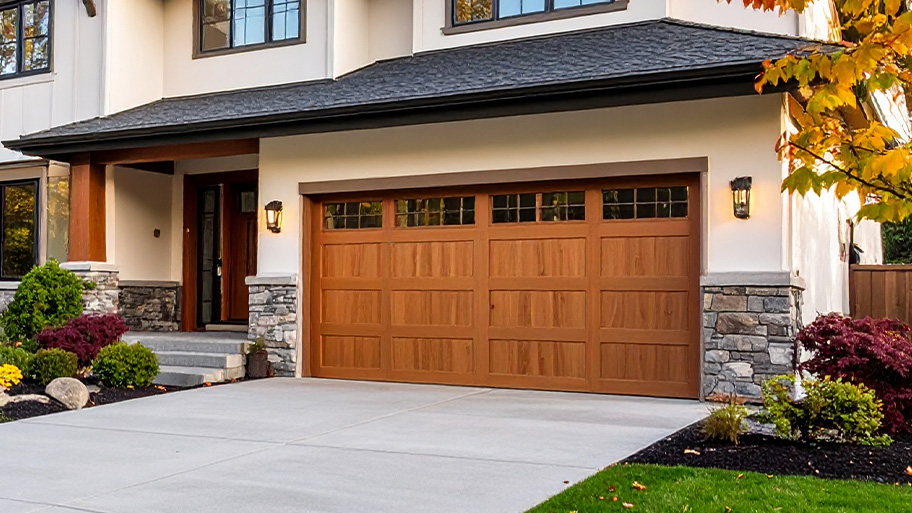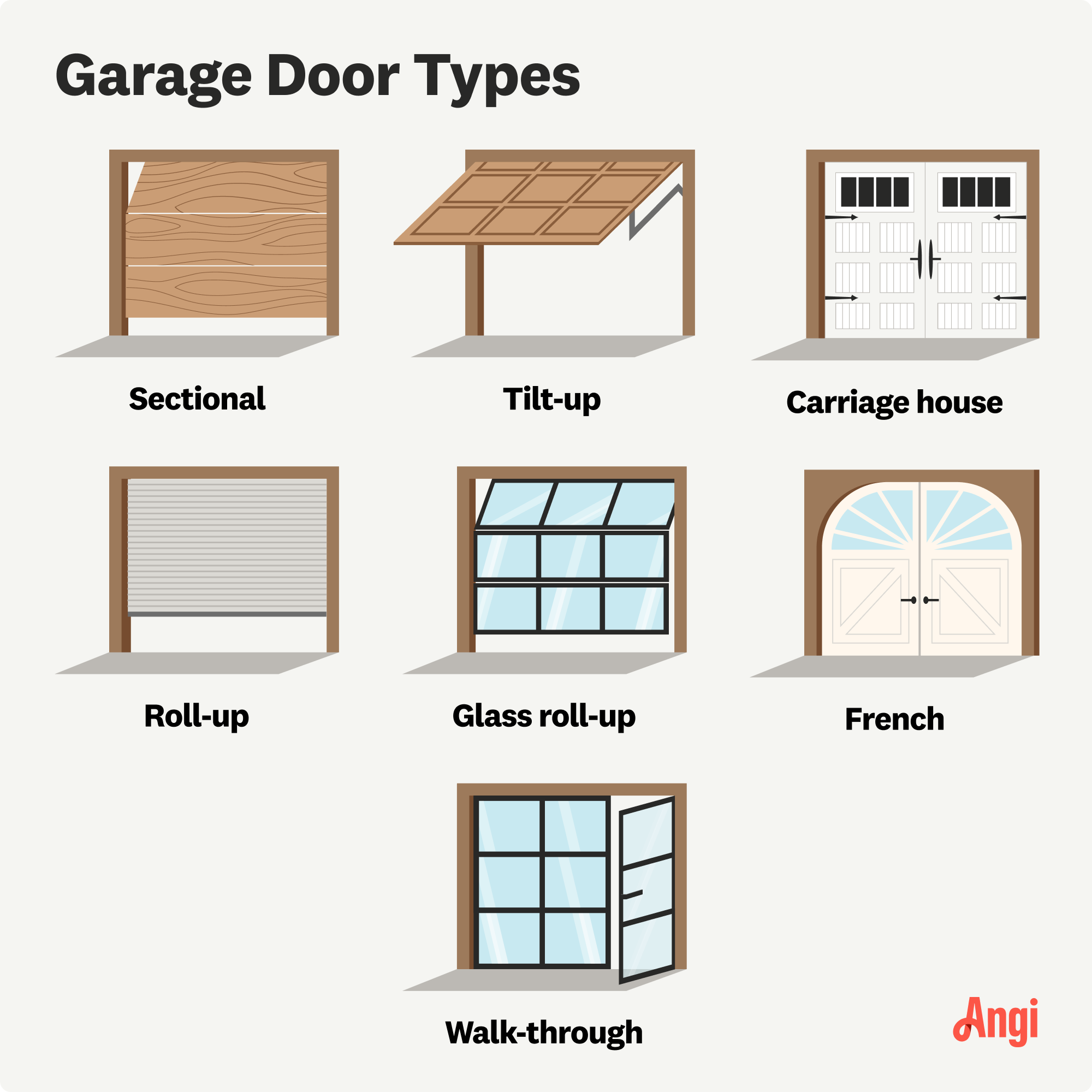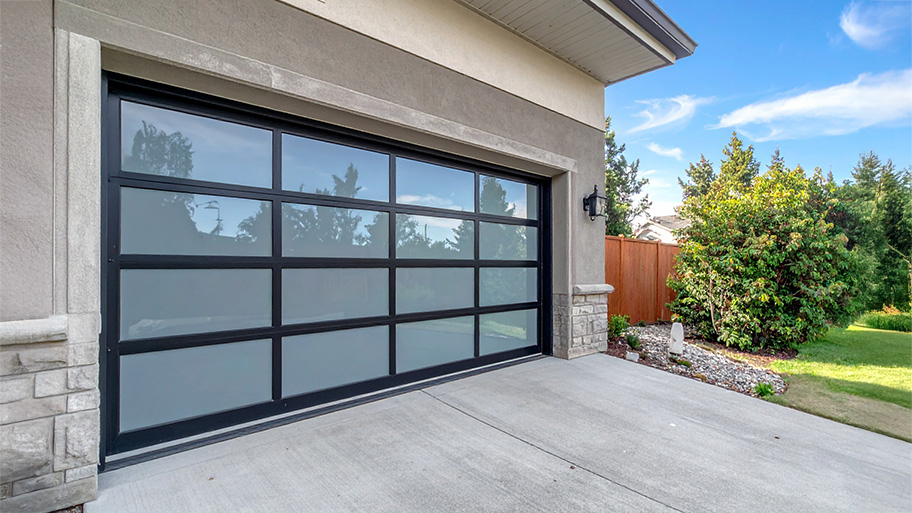
Replacing a garage door is necessary to add security and value to your home. Learn how each door type affects the total cost of this project in Columbus, OH.
Installing an insulated garage door costs $1,500 on average, or between $1,100 and $4,200, depending on the size of the door and its materials.


Insulated garage doors have layers of insulation between the door panels, and they cost a few hundred dollars more than non-insulated garage doors.
The total cost of insulated garage doors depends on factors like size, material, insulation level, and additional features.
Insulated garage doors lower energy bills, reduce noise levels, and protect temperature-sensitive belongings.
You might install insulated garage doors if you live in areas with extreme temperature or if you’re inside the garage often.
Installing an insulated garage door costs an average of $1,500, with prices often falling between $1,100 and $4,200 depending on factors like door type, size, insulating materials, and more. Sometimes, the cost might be upwards of $9,000, such as when homeowners request a three-car garage door made from expensive materials like wood.
An insulated garage door is a smart investment because it enables your garage to maintain a consistent temperature. which lowers your heating and air conditioning bills. These garages also help with noise reduction, and they’re often more durable.
Insulated garage doors cost an average of $1,500. This is higher than the average cost for non-insulated garage doors, which is about $1,200.
Many modern garage doors have a fair amount of insulation, so check the insulation rating of your current door before ordering a new one. Replacing a garage door is a costly endeavor, and the price depends on a number of factors.
R-value indicates how effectively insulation stops heat from flowing into or out of a structure, and it ranges from 0 to 20. The higher your R-value, the better your insulation will be—and the steeper the price tag.
Less expensive insulated garage doors use polystyrene, stuffed between the layers, as an insulating agent. This type of garage door costs $400 to $1,100 for materials, but the R-value is on the lower side.
For deeper insulation, manufacturers spray polyurethane foam between the panels. This option is more expensive, with components costing $700 to $1,600 or more, but it allows for a higher R-value and lower energy bills.
Garage door materials greatly contribute to the overall cost. Also, thicker garage doors (two and three layers) provide more insulation than their single-layer counterparts, leading to higher prices.
| Garage Door Material | Average Cost Range |
|---|---|
| Steel | $650–$3,200 |
| Aluminum | $600–$2,900 |
| Fiberglass | $800–$2,700 |
| Wood | $900–$4,500 |
| False wood or composite | $650–$4,800 |
| Vinyl | $800–$2,500 |
Metal garages, like steel or aluminum, are budget-friendly options. While single-layer metal doors do not provide additional insulation, double-layer and triple-layer ones do because insulation is fitted between the panels.
Fiberglass is less common but can last 35 years or more, and it’s better at insulating a garage than metal. Uninsulated fiberglass doors have an R-value between 0 and 1.
Wood is the most expensive garage door material, especially when considering the maintenance costs. But wood is a powerful natural insulator, so if you have a higher budget, it can be a smart choice. Wooden garage doors have an R-value between 1 and 2, and it can be up to 3 if the wood is especially dense and thick.
Insulated garage door prices also vary based on size. That’s because larger doors require more building materials, insulating materials, and labor. A standard insulated one-car garage door ranges from $500 to $2,500, while a two-car garage door ranges from $750 to $4,000.
| Size of Garage Door | Average Cost |
|---|---|
| One-car | $500–$3,000 |
| Two-car with one double door | $800–$5,000 |
| Two-car with two single doors | $1,200–$4,900 |
| Three-car with one single and one double door | $1,400–$7,000 |
| Three-car with three single doors | $1,700–$7,200 |
Labor to install insulated garage doors ranges from $300 to $500, with complex jobs costing even more. Average installations take three to six hours, while complicated setups might require twice that amount.
In most cases, an electrician is also required for wiring automatic doors. Hiring an electrician costs $50 to $100 per hour, though the wiring takes just one or two hours of work.

How your garage door opens and closes also impacts the cost. Naturally, automatic garage doors are more expensive than manual ones—usually by about $200 to $1,300. Here’s a breakdown of some popular options:
| Type of Garage Door | Average Installation Cost |
|---|---|
| Tilt-up | $400–$1,600 |
| Sectional | $750–$2,000 |
| Roll-up | $600–$3,000 |
| Carriage house | $1,200–$8,000 |
| French | $2,000–$6,000 |
Hauling away the old door is a crucial part of a garage door replacement process. The cost to relocate your old door to a dedicated facility is about $50 to $200, depending on the door’s size and type. Many pros wrap this cost into the overall estimate, so speak with your contractor ahead of time.
In some cases, you might need a permit to install insulated garage doors. The price is often between $40 and $120, and your garage door installer should handle the logistics.
Garage doors seem straightforward, but you can outfit them with extra features to increase their usefulness, improve your home’s security, and more. Here are the average costs for some of these add-ons.
Garage door opener: Installing a garage door opener costs $220 to $520, on top of the installation estimate. Also, buying extra garage door remotes to operate the door cost $20 to $50 per piece.
Security features: Better safe than sorry, right? While installing insulated garage doors, you can add security features like cameras, sensors, smart locks, motion-activated lights, and keypads. Expect these to range between $200 to $1,200 depending on the specifics.
Windows: Windows bring natural light into the garage. Some prefabricated models ship with pre-existing windows, and these doors cost an average of $1,500. Putting a window into a garage door at the point of installation requires additional parts and labor for $50 to $500 per window.
Customizations: From speciality hardware to screens to decorative accents, insulated garage doors can be customized in many ways. Costs might be as low as $800 or as high as $10,000.

You may be tempted to install an insulated garage door yourself, saving between $300 and $500 in labor costs. But these savings only come into play with a successful installation, and an incorrect DIY job can lead to maintenance and repair bills that are higher than the cost of the original job.
What’s more, installing an insulated garage door is a dangerous task. Garage doors are finicky and extremely heavy, and their springs are coiled to extreme weight. Pros are insured so you’re covered in the rare event of an injury or accident.
You can still try your hand in DIY by adding insulation layers on your own, without replacing the whole door, for about $50 to $200. But keep in mind that DIY kits use less robust materials than professionals can access, lowering the effectiveness of the insulation. Contacting a local insulation pro is the best move for most homeowners.
You might install insulated garage doors in the following situations:
You use the garage as a workspace, home gym, hobby room, or additional living space
You live in an area with extreme temperatures
You want to cut down on energy costs
If your garage is directly attached to your home, insulation can help prevent heat loss and reduce your heating and cooling bills.
Looking to save on insulated garage door costs? Here are some tips worth considering:
Gather multiple estimates: Contact multiple insulation pros near you before settling on your preferred candidate. This lets you examine a wider array of cost ranges.
Bundle related projects: A fair percentage of any service call is getting the pro to your house, so consider bundling related projects to save serious bucks. For example, when replacing a garage door, you can install an automatic opener or update your security systems.
Insulate yourself: Many garage doors integrate with DIY insulation kits. You might forgo the entire replacement process and insulate the door yourself, though it might not be as effective.
Go with prefab stock options: Custom garage doors are aesthetically appealing, but they drive the cost up. Save money by choosing prefab stock doors that are ready to place as soon as you make the purchase.
Limit customizations. Special touches increase the cost of an insulated garage door, so only choose features that matter most to you.
Pick a less expensive material. You’ll spend less on steel or aluminum garage doors, while wood or glass doors come with a higher price tag.
Home is the most important place on earth, which is why Angi has helped more than 150 million homeowners transform their houses into homes they adore. To help homeowners with their next project, Angi provides readers with the most accurate cost data and upholds strict editorial standards. We extensively research project costs to develop the pricing data you see, so you can make the best decisions for you and your home. We rely on reputable sources, including the U.S. Bureau of Labor Statistics, academic journals, market studies, and interviews with industry experts—all to ensure our prices reflect real-world projects.
Want to help us improve our cost data? Send us a recent project quote to [email protected]. Quotes and personal information will not be shared publicly.
From average costs to expert advice, get all the answers you need to get your job done.

Replacing a garage door is necessary to add security and value to your home. Learn how each door type affects the total cost of this project in Columbus, OH.

Your home's garage door cable repair cost depends on several factors, including the cost of other damage that may be the result or the cause of the failure.

A garage door repair costs less than you might think, considering you can sometimes repair individual panels. However you can’t do many fixes yourself—learn why you need a pro.

Learn how to frame a garage door with our guide that includes instructions for each step, from measuring the rough opening to installing the side jambs.

Based on its quality and design, your garage—and its doors—can increase your home’s value. Here’s what you need to know about your garage door alternatives.

Is your garage door frozen shut and preventing access? Use this simple how-to guide to fix the problem and take back your covered parking space.